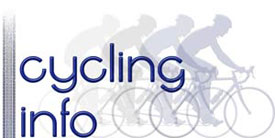I remember in my first season of racing, I made tremendous progress. There was one patch where every time I raced, I seemed to set a personal best. I imagined this upward trend continuing and at this rate, I reckoned I would be in the Tour de France by about 2008. Well, of course, I’m still here racing domestic time trials. Progress is never as simple as we would like!
Often after a great first season, we will find that our performance stagnates or even appears to go backwards. This can be demotivating and it is important to work out how to deal with this.
Tips for Dealing with Stagnant Performance
1. Firstly It is quite natural. Everybody will have this experience at some stage. We cannot expect consistent progress in a straightl ine. To make progress part of that is the plateau’s. Even the best athletes face this at some time in their career. If you see it as part of the experience, you won’t feel so motivated. However, although it is natural to have plateau’s we need to also have the confidence and determination to strive for a higher peak.
Also, one other note: be wary of measuring your progress by times produced in time trials. Your time can vary enormously depending on weather conditions / position e.t.c. Power is a better guide.
2. Don’t be demotivated Don’t be demotivated by the feeling ythat ou are going backwards. Don’t dwell on a disappointing set of results, it is important to move on and think of the next race. These set backs are just as important to our progress as the times when we do better than expected. It is natural to be disappointed, but just think about next race, next training session.
- If you can remain cheerful whatever the result, you will retain the enthusiasm and energy to progress.
3. Re-evaluate your Training schedules. Don’t always stick with the same training routine. Consider doing something quite different. Either vary distance, duration or intensity. Or perhaps you need a complete break. Try stepping back and evaluating your training.
- Do you allow proper recovery rides, where you really recover? (try using a hear rate monitor and keep below 65% max heart rate on recovery rides)
- Do you really push yourself when doing intervals training? (VO2 Max intervals)
- Are all your rides pretty much at same effort level and speed?
- is your training targeted to what you are achieving? e.g. if riding a 10 mile time trial, are you training at that kind of intensity?
4. Are You Overtraining? As we train more, it becomes just as important to rest and allow sufficient recovery. Sometimes stagnant performance may be due to overtraining. Taking a short break may actually help us to regain our progress. See: Tips to avoid overtraining.
5. Don’t be Too Goal Oriented. It is good to have goals. But, we shouldn’t get too dismayed if we don’t achieve our ambitious targets. Keep persevering, just because we don’t achieve things at once, means we need to have more patience.
6. Train with Others – Take help from a coach. If we are the only ones to monitor our performance and training schedule, we can become too introspective, losing sight of the bigger picture. Talking to others may help put our performance in perspective and remind ourselves we can do better in the future.
7. Break Season into Periods
After racing season ends in October, I take a break from intervals and concentrate on endurance. This is as much as psychological as physiological rest. By January, I start to feel motivated to do some threshold training. By February I feel the hunger to do some Vo2 intervals. I like this approach as after taking a break, I feel from listening to the body, when I want to come back to hard training. Also, there is no harm in taking a break in the middle of the racing season.
8. Check Non-Bike Aspects.
Nutrition can play a key role. When you are training hard, your body is more sensitive to the food you take on. Make sure, you are eating good quality food, that gives sufficient energy and aids recovery. See: Food and nutrition.
9. Cycling Efficiency.
One thing, you can try and do is to improve your cycling efficiency.
10. Cycling Buddy
Even if you don’t have a coach, it is good to have someone to bounce ideas off. If you speak to your average club member, they will all have experienced similar levels of progress in their training.
Related


“You shave your legs in case you fall off your bike”. with shaven legs the hairs do not get caught up in the cut, cleaner/healthier easier to treat. Never heard of anyone shaving their arms though lol.
Thanks David,
I sometimes struggle to give myself a good reason to shave the legs.
Will check out Flamme Rouge, haven’t heard of it before.
Love the site, but I still can’t give friends a good reason why I shave my legs! Still reading through the advice articles, enjoying them very much. Site is similar to Tony williams’ Flamme Rouge website, very much the same outlook this site has.
Thanks, will be a frequent visitor.